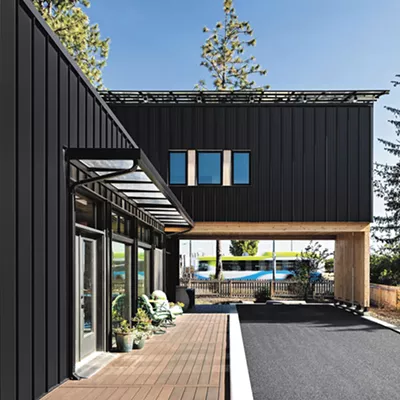It’s a brisk Tuesday morning and I’m habitually following my 6-year-old son around the house, making sure he has his homework, lunch and coat. I’ve been in Love and Logic training, and I know it’s his responsibility to remember. Then he walks out of the house with just a sweater.
“Take a coat.
“I’ll be fine, mom.”
“Sorry. It’s my job to worry about you.”
“No, it’s my job to worry about myself, because it’s my self.”
In spite of me, or perhaps because of me, Love and Logic seems to be sinking in.
Created 30 years ago by psychologist Foster Cline and former school principal Jim Fay, Love and Logic has taught thousands of parents and teachers to alter the way they solve problems with children.
According to its Website (loveandlogic.com), disciplining children should be guided by two principles: “Adults take good care of themselves by setting limits without anger, lectures, threats or repeated warnings,” and “When children cause problems, adults hand those problems back by providing large doses of empathy and logical consequences (ideally created by the child).”
How does Love and Logic work?
In Alicia Low’s house, when her 2-and-a-half-year-old daughter spills a glass of chocolate milk on the floor, “I don’t freak out,” she says, “I just give her a towel to pick it up.”
Love and Logic facilitator, Spokane School District 81 counselor Valerie Kjack, trains hundreds of parents every year. She admits that while the concepts of Love and Logic are simple, transitioning to a new way of parenting is not easy.
“Parents have a hard time with the empathy part,” she says. “It’s hard to feel sad when everything in your body tells you to be angry. It’s such a switch for people.”
Love and Logic suggests using the same one-liner, like “How sad,” or “What a bummer,” consistently when your child does something that is not the best choice. It is important to deliver those words before talking about consequences.
For example, if a teenager wrecks the car, rather than getting angry or lecturing, say: “We’re so glad you weren’t hurt, we bet you feel awful. Don’t worry, you can drive the car again just as soon as you get the damage paid for.” Then the teen must, with guidance, come up with a plan to do it.
Love and Logic takes the anger out of not only major family ordeals like a wrecked car, but also routine daily struggles. One key tenet is that parents don’t have to explain all their requests in great detail to their children, which can be very refreshing. “My 5-year-old daughter used to nit-pick me,” explains Low. “Now I choose to use fewer words by not explaining my viewpoint. I say ‘I love you too much to argue,’” (another Love and Logic standard line), and Low says, remarkably, they don’t.
It may cause fewer conflicts, but giving problem solving to kids is often a tough adjustment for them, too.
“My son used to say ‘Can’t you just ground me and get it over with?’” laughs Kjack, “I told him, ‘No, the agony is more fun for me. I want you to think about what you’ve done and be responsible.’”
Fay and Cline emphasize the importance of allowing children to follow through with their plan, or not. They say intervening or rescuing a child from failure is “robbing him or her of this chance to learn.”
Kjack says real consequences are the best behavior modifiers.
“I want kids to be thinking ‘How is this next decision going to affect me? Is it healthy or not healthy?’”
Brenda Blazekovic, a pre-school teacher and mother of three, says the biggest obstacle to using Love and Logic is others’ misunderstanding.
“When my youngest son wanted to wear shorts to school on a cold day, I didn’t want to fight, so I let him, and told his teachers ‘He has to go outside for recess.’ They looked at me like I was this awful parent.” Blazekovic says they reluctantly let him outside, and the next day he chose to wear pants. “He got cold, and that was a natural consequence,” she says. “We never had the issue again.”
Sometimes the natural consequence doesn’t present itself, so it’s up to adults like Kjack to help children create one.
“You say to the kids, ‘What do you think ought to happen to you?’ They usually come up with something. The kids are harder on themselves than we would ever be.”
Kjack says allowing this level of ownership increases children’s sense of responsibility and improves behavior, leaving “more time for actual teaching and learning.”
The benefit of having kids feel logical consequences for their actions may only be fully realized when they’re all grown up. Fay and Cline write, “They’ll be saying, ‘I recognize this world, we practiced it at home.’”














